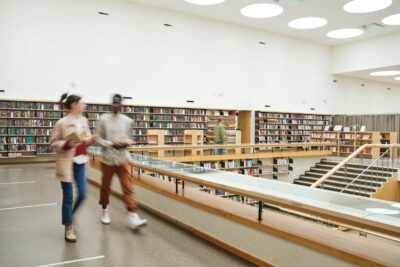Optimizing success for students who change campuses
July 29, 2022
Eric Bielefeld
Professor of Speech and Hearing Science, The Ohio State University
The views and opinions expressed are those of the author and do not necessarily represent the views or opinions of EAB.
The question: What co-curricular programming can be put in place to ease the student transition from regional campuses to the main campus of a large public institution?
A key part of the land-grant mission of a large public state institution is to provide access to higher education for students within that state. As distance learning continues to grow, it has the potential to provide expanded access to students within a state who are not in close proximity to a physical campus of the institution. However, there remains a need for regional or satellite campuses to provide access to students who are not ready or able to access the flagship main campus of the institution.
At The Ohio State University (OSU), the main campus is located in Columbus, Ohio, but the institution also has four regional campuses located in Lima, Mansfield, Marion, and Newark, Ohio. While the Columbus campus is selective admission, the regional campuses operate with open admission.
This results in expanded access for students who are physically located near the regional campuses or who benefit from smaller class sizes and a smaller campus. Students at the regional campuses are offered exceptional education from engaged faculty who are committed to the excellence of our regional campuses and fulfilling OSU’s land-grant mission.
Campus-change students, those transitioning from a regional campus to the main Columbus campus, represent a significant proportion of our regional-campus students. The transition from a regional campus to the main Columbus campus can be challenging. The student is very likely moving further away from their home support network, moving to a larger campus with larger class sizes in a larger metropolitan area, and interacting with an entirely new student cohort, all while moving into the more advanced part of their undergraduate curriculum.
Campus-change students see a mean reduction in overall GPA of approximately 0.3 after the transition. There are certainly students who thrive on the Columbus campus, but there are also students who struggle with the campus change process for a variety of reasons. The result is lower retention and graduation rates for campus change students than transfer students who arrive at OSU from another institution.
The proposed co-curricular programming for campus-change students is built off a model of OSU’s successful Second-Year Transformational Experience Program (STEP). In that program, second-year undergraduates join a cohort of other students and a faculty mentor to engage them in new experiences on and off campus in order to help the students find areas about which they are passionate and to help mold them into undergraduates who will matriculate to graduation.
The proposal is to create regional campus cohorts of 10-12 students who intend to make the campus change in the future. They will be assigned a mentor on the regional campus who will guide them through what to expect on the Columbus campus and in the advanced portion of their undergraduate careers.
Once they make the campus change, they will stay in their cohorts, but will be assigned a new mentor on the Columbus campus. This way, the students will have a familiar network of other students with whom they share the fundamental campus change experience, and they will have mentors from whom they can gain advice and insight into life on the Columbus campus.
As we emphasize and better understand the mental health needs of our students, shrinking the very large Columbus campus to a smaller cohort of familiar students and faculty mentors may have a positive impact on their transitions. The goal is to make the experience smoother and allow the students to focus on maximizing their educational opportunities on the Columbus campus.
More Blogs

'No net new': What stuck with university leaders at our Campus Space Summit

Responding to federal policy shocks: What we learned from nearly 50 higher ed institutions
